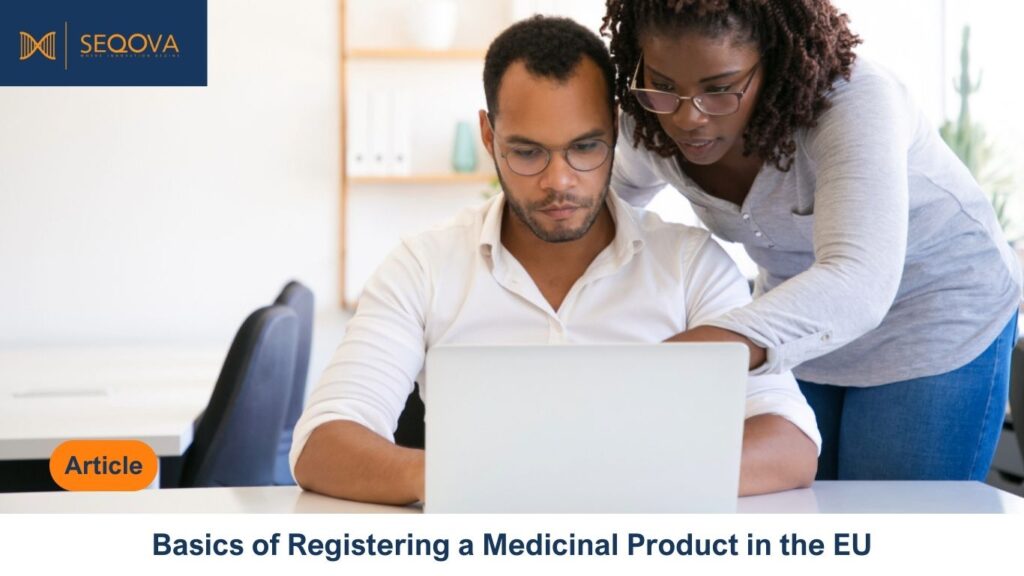
Discover the nuances of registering your medicinal product in the EU.
Medical Product Registration in the EU: “How is it done?”
Registering a medicinal product in the European Union (EU) involves compliance with strict regulatory requirements to ensure safety, efficacy, and quality. The process is governed by the European Medicines Agency (EMA) and National Competent Authorities (NCAs), depending on the chosen registration pathway. Take a look at the key considerations for registering a medicinal product in the EU.
Regulatory Pathways available in the EU: “What options do I have to register my product in the EU?”
The EU is made up of several different countries, and because of this, there are multiple pathways to register medicinal products. Below is a summarised version of the major pathways available for registration. Later, we will also highlight some of the nuanced pathways referencing special circumstances.
The main pathways for medicinal product registration in the EU are:
- Centralised Procedure (CP): Mandatory for certain medicines (e.g., biotechnology products, orphan drugs, advanced therapy medicinal products) and optional for others. Results in an EU-wide marketing authorisation.
- Decentralised Procedure (DCP): This applies to products not covered by the centralised procedure but intended for multiple EU countries.
- Mutual Recognition Procedure (MRP): For products already authorised in one EU country, seeking recognition in others.
- National Procedure: For products intended for a single EU country.
Dossier Preparation and its contents: “What does my dossier need to contain?”
The applicant must prepare a Common Technical Document (CTD). This document is also published in a special format, utilising specific software known as the Electronic Common Technical Document or eCTD, before being submitted for evaluation. It would be keen to note that most submissions are done electronically, with an exception available, allowing paper submissions for homoeopathic medicines [1]. The contents of the CTD are:
- Module 1: Administrative and product information (e.g., application form, proposed SmPC, labelling, and package leaflet).
- Module 2: Summaries of quality, non-clinical, and clinical data.
- Module 3: Quality (pharmaceutical) data, including manufacturing processes and control.
- Module 4: Non-clinical (preclinical) study reports (e.g., pharmacology and toxicology).
- Module 5: Clinical study reports (e.g., pharmacokinetics, efficacy, and safety).
Additional standards to be met in the EU: “Do I have to consider anything else?”
The EU has some of the strictest standards for medicinal products when it comes to quality, safety, and efficacy. The dossier must contain ample data to support these criteria, which emphasises a qualitative aspect of the dossier. This is a key point for regulatory individuals as this can slow down the registration process if not properly taken into account from the onset of the application. The product must meet EU standards for:
- Quality: Compliance with Good Manufacturing Practice (GMP), stability studies, and control specifications.
- Safety: Non-clinical toxicology and pharmacology data to demonstrate safety.
- Efficacy: Clinical trial data showing the product’s therapeutic benefits outweigh the risks.
Good Practices Compliance must be demonstrated: “What else am I overlooking?”
Besides the EU requirements, there are global standards that must be taken into account for the testing and manufacturing of medicines. The applicant must demonstrate compliance with:
- Good Manufacturing Practice (GMP): For production. Submissions to the EU must contain an EU GMP certificate for the production site of medicine. For external companies wanting to register in the EU, this has been a sore point for many years. We will address more details and possible strategies in future articles.
- Good Clinical Practice (GCP): For clinical trials.
- Good Laboratory Practice (GLP): For non-clinical studies.
Pharmacovigilance System: “Do I need a PV system to register my product?”
The EU has instituted the Good Pharmacovigilance Practices (GVP) guidelines as part of the 2010 pharmacovigilance legislation. The guidelines are constantly updated and while the majority focus on monitoring the safety of the medicines within the population post-authorisation [2], there are a few guidelines suggesting the pharmacovigilance system be in place for the registration process.
The applicant must establish a pharmacovigilance system to monitor the product’s safety after authorisation. This includes:
- Risk Management Plan (RMP).
- Periodic Safety Update Reports (PSURs).
Scientific Advice and Pre-Submission Meetings: “Who do I communicate with if I want to know more about my product being registered?”
Though not mandatory and non-legally binding, the EMA or national authorities offer scientific advice to guide the development process and ensure the dossier meets regulatory expectations. This is one of the few options available where the applicant can discuss directly with regulators. Both parties can voice concerns, ask questions and debate the nuanced points of the product. Adequately utilising this avenue can make the world of difference in having your product registered promptly, saving additional future costs.
Fees: “How much is this going to cost?”
Whether it is a seasoned professional or a newbie to the regulatory field, the question always comes up. “How much is this process going to cost?” Unfortunately, there is no one answer-fits-all solution. This usually entails a much deeper discussion as application fees vary depending on the procedure and the regulatory authority involved.
Below we will look at authority fees from some of the more popular Reference Member States (RMS) within the EU. Please note that these fees are taken from the authority website and are subject to change at any time. Consult us for the most updated information.
| Country | Application Type | Product Type | Procedure | Fees |
| Netherlands | New Application | New Active Substance | National Procedure | €67,110 |
| MRP with NL as RMS | €29,910 | |||
| DCP with NL as RMS | €97,020 | |||
| Netherlands | New Application | Generic Substance | National procedure | €35,250 |
| MRP with NL as RMS | €21,120 | |||
| DCP with NL as RMS | €56,370 | |||
| UK | Major Applications | New Active Substance | Registering in the UK | £68,663 |
| UK | Abridged Applications | Generic Substances | Abridged Complex | £19,063 |
| Abridged Standard | £6,985 | |||
| Abridged Simple | £2,820 | |||
| Ireland | New Application | New Active Substance | National Procedure | €67,110 |
| MRP with IE as the RMS | €29,910 | |||
| DCP with IE as the RMS | €97,020 | |||
| Ireland | New Application | Generic Substances | National Procedure | €35,250 |
| MRP with IE as the RMS | €21,120 | |||
| DCP with IE as the RMS | €56,370 | |||
| Italy | New Application | New Active Substance | National Procedure | €55,680 |
| Italy | New Application | Generic, Hybrid, & Informed Consent Applications | National Procedure | €21,600 |
| Italy | New Application | Biosimilar Substances | National Procedure | €36,000 |
It must be noted that these fees only include one strength of the product and there are additional fees for additional strengths and presentations. The simplified table above also illustrates how complicated it can get when calculating fees and the overall cost of registering a medicinal product in the EU.
As a side note, the EMA “New Fee Regulation” (EU Regulation 2024/568) which was adopted on the 7th of February 2024, came into effect on the 1st of January, 2025. To supplement this, they also released a “Fee Regulation and Working Arrangements” document. EMA will be implementing a cost-based system, which is proportional to their work output along with adequately reimbursing member state contributions for medicine evaluations and quite a few more changes.
Moreover, for complex fee calculations and ever-changing regulations, companies wanting to enter the EU market, it is pertinent to have a reliable partner who can support them in understanding the latest regulations, calculating these fees, and setting the appropriate budgets.
Stick with us, as our upcoming publications will provide a more explorative insight into the world of registration fees.
Timeline: “How long will all this take?”
The great thing about the EU registration procedures is that they have a specified timeline. This does not always mean the registration process goes as planned. Coming from a consultancy background, we sometimes have to deal with unforeseen situations and this can slow down the process.
The good part of this is having a partner familiar with the registration process and good communication skills, which can alleviate any time losses and have the registration back on track from any derailments. The standard review timelines for each procedure are as follows:
- Centralised Procedure: 210 days (excluding clock-stops for applicant responses).
- Decentralised/Mutual Recognition Procedures: Typically, 210 days. While we don’t intend to remake the wheel, you can check out a DCP timeline chart from one of our friends in the industry.
- National Procedure: Varies by country.
Besides the actual timeline of the registration procedure, you also have to consider booking a slot with the regulatory authority ahead of time. This can vary with the different health authorities. In the case of the Danish Medical Authority:
“In order to best meet applicants’ requests for specified submission dates and to optimise our own use of time and resources, future applicants are advised to request time slots for their application(s) within a reasonable time prior to the proposed application date, however max. 1 year before the desired submission date.
Time slots will only be allocated to applications for new marketing authorisations (including line extensions) through the decentralised procedure (DCP) where Denmark is acting as reference member state (RMS).”[3]
Though the EU seeks to harmonise the procedures and processes, there exist subtle nuances that regulatory professionals must always keep up with.
Post-Approval Obligations: “My product is registered. What do I do now?”
Registering your product in the EU is one part of the process. Once the license is granted, you have additional legal obligations to consider. After approval, companies must comply with:
- Ongoing pharmacovigilance requirements.
- Annual renewals or updates (if applicable).
- Variations for any post-approval changes.
These variations all come with associated costs and timelines. Whether the company decides to maintain the license or transfer it, they have to file variations. A key aspect to be considered prior to the product registration.
The Overall Picture: “Where do I go from here”
The medicinal registration process does not exist in a standalone box. Concurrently, other aspects are ongoing throughout the process. Licensing agreements, commercialisation, supply chain, price and reimbursement and a myriad of other discussions. The series will continue as we dive deeper into these topics as well as a more in-depth look into a few of the ones mentioned in this article. Stay tuned and happy registering.
Curious to learn more?
Reach out to us to start a collaborative conversation about your next EU registration.
